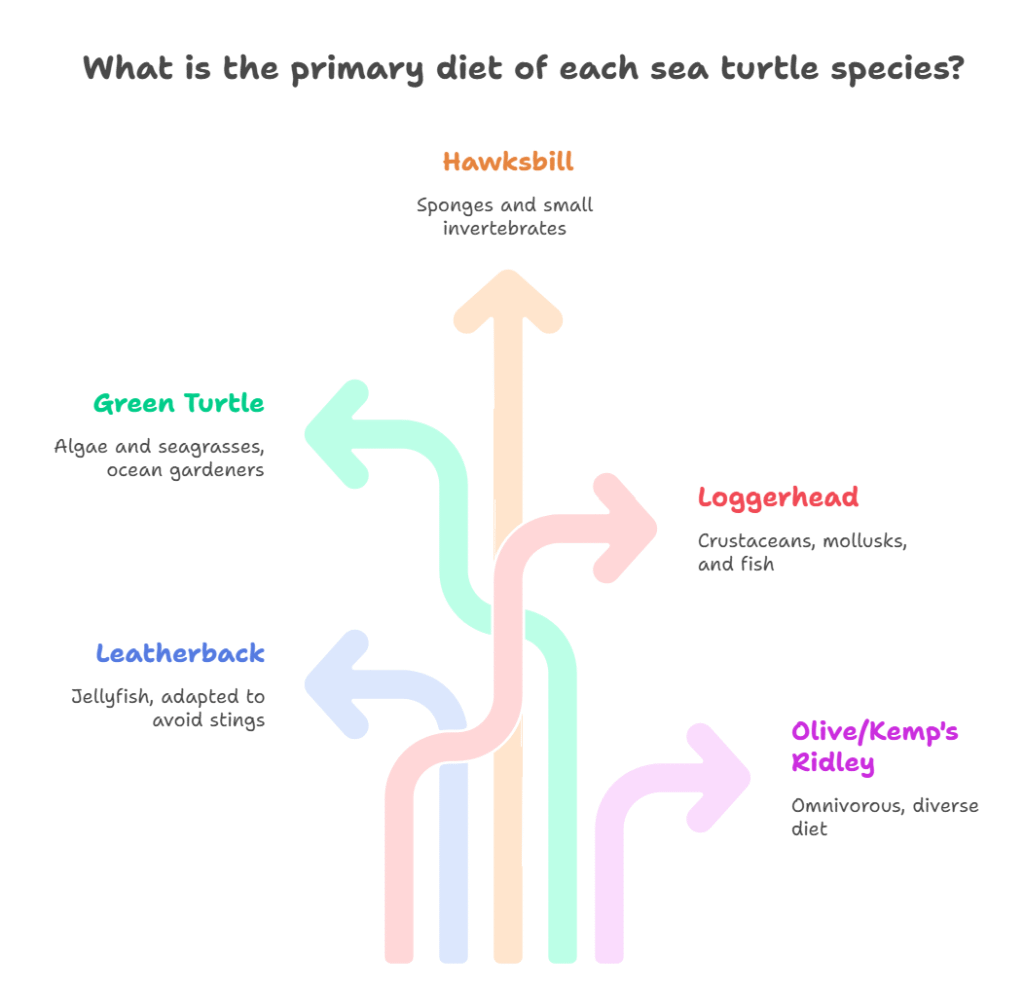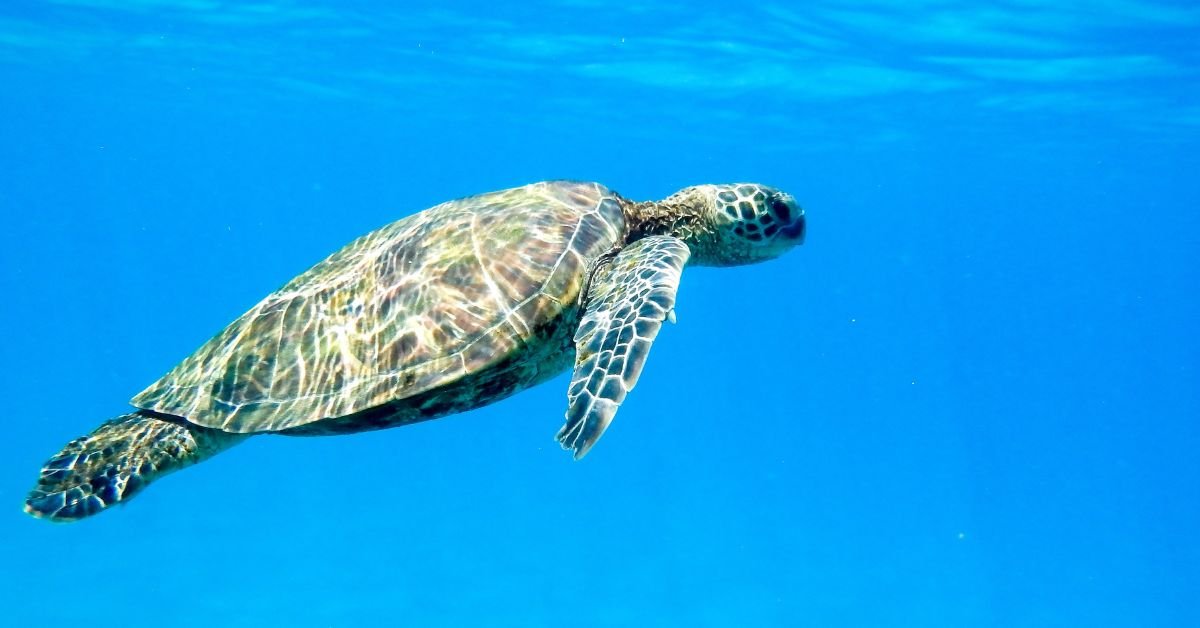Tortugas Marinas Sea turtles aren’t just symbols of longevity and wisdom in many cultures—they play a vital role in maintaining the balance of marine ecosystems. From the beaches of Costa Rica to the crystal-clear waters of the Caribbean, millions of people await the magical moment each year when baby sea turtles emerge from the sand and race toward the ocean. But what’s really behind that iconic image? What challenges do they face today, and how can we help protect them?
Types of Sea Turtles: Meet the Ocean’s Most Remarkable Species
When people talk about types of turtles, it’s easy to assume they’re all the same. Nothing could be further from the truth. There are seven recognized species of sea turtles, each with unique features and surprising adaptations.
Leatherback Turtle (Dermochelys coriacea)
The leatherback turtle is the largest of all sea turtles, weighing over 1,300 pounds (600 kg). Its shell isn’t hard but rather flexible and covered with thick skin. Leatherbacks are famous for their epic migrations, crossing entire oceans to feed on jellyfish.
Green Turtle (Chelonia mydas)
The green turtle gets its name from the color of its fat, not its shell. It’s one of the most common turtles in the Caribbean and Pacific. Interestingly, juveniles are omnivorous, but adults become almost exclusively herbivorous.
Hawksbill Turtle (Eretmochelys imbricata)
With its brightly colored shell, the hawksbill turtle is sadly known for being hunted to make combs and jewelry. It’s one of the most endangered species and plays a key role in coral reef health.
Loggerhead Turtle (Caretta caretta)
The loggerhead turtle is robust with a large head. It prefers temperate waters and is commonly seen in the Atlantic and Mediterranean. Its diet is varied, including crustaceans and mollusks.
Olive Ridley Turtle (Lepidochelys olivacea)
Small and olive-colored, the olive ridley turtle is famous for its mass nesting events called “arribadas,” where thousands of females lay eggs together on Central American beaches.
Kemp’s Ridley Turtle (Lepidochelys kempii)
The Kemp’s ridley turtle is the smallest and rarest sea turtle. Its main nesting site is in Tamaulipas, Mexico, and it’s critically endangered.
Flatback Turtle (Natator depressus)
Exclusive to Australia, the flatback turtle is little known outside Oceania. Its shell is flatter than other species, giving it its name.
What Do Sea Turtles Eat? Unlocking Their Secret Diets
One of the most common questions is what do turtles eat. The answer depends on the species and their life stage. Sea turtles can be carnivorous, herbivorous, or omnivorous.
Diet of Adult Sea Turtles
- Leatherback: Mainly jellyfish. Their mouths are adapted to avoid being stung by tentacles.
- Green turtle: Algae and seagrasses. They’re the gardeners of the ocean.
- Hawksbill: Sponges and small invertebrates.
- Loggerhead: Crustaceans, mollusks, and fish.
- Olive ridley and Kemp’s ridley: Omnivorous, eating everything from crabs to algae.

What Do Freshwater Turtles Eat?
While our focus is on sea turtles, many people wonder what do freshwater turtles eat. These turtles usually feed on insects, small fish, aquatic plants, and even fallen fruit.
What About Baby Sea Turtles?
Baby sea turtles are voracious eaters. They consume small crustaceans, larvae, algae, and anything they find floating. Their survival depends on quickly finding food and avoiding predators.
“I watched a baby sea turtle munching on a tiny crab at the shoreline. It was amazing to see how it fought for its life from the very first minute!” — shared by a volunteer at a nesting beach.
The Sea Turtle Life Cycle: A Race Against Time
The life cycle of sea turtles is a true odyssey. It all begins when the female returns to the beach where she was born—sometimes after 20 years—to lay her eggs. Each nest can contain between 50 and 200 eggs, but only one in a thousand hatchlings will reach adulthood.
Key Life Stages
- Nesting: The female digs a hole in the sand and lays her eggs.
- Incubation: Eggs remain buried for 45 to 70 days.
- Hatching: The hatchlings emerge and race to the sea, guided by the moonlight.
- Growth: They spend years in the open ocean, feeding and growing.
- Maturity: Once adults, they return to their natal beach to reproduce.
Current Threats to Sea Turtles in 2025
Despite their resilience, sea turtles face more dangers than ever. Climate change, pollution, and accidental fishing are just a few of the challenges.
Main Threats
- Plastic pollution: Many turtles mistake plastic bags for jellyfish and die after ingesting them.
- Climate change: It affects sand temperature, which determines the sex of hatchlings and alters nesting patterns.
- Bycatch: Fishing nets trap thousands of turtles every year.
- Illegal hunting and trafficking: Hawksbill shells are still coveted on the black market.
What’s Being Done?
In 2025, technology is a key ally. From drones monitoring nests to GPS tracking migrations, science is helping protect these species. More coastal communities are also joining conservation and hatchling release programs.
Why Are Sea Turtles Important?
Sea turtles are not just beautiful—they’re essential for ocean health. They help maintain seagrass beds and coral reefs, benefiting thousands of species. Without them, the marine balance would be at risk.
Surprising Facts About Sea Turtles
- Amazing navigation: They use the Earth’s magnetic field to orient themselves.
- Longevity: They can live over 80 years.
- Prehistoric survivors: They’ve existed for over 100 million years.
- Temperature-dependent sex: Warmer sand produces more females; cooler sand, more males.
How Can You Help Sea Turtles?
Want to help protect sea turtles? Here are some simple ideas:
- Don’t leave trash on the beach.
- Join hatchling release programs.
- Reduce plastic use.
- Support conservation organizations.
- Respect nesting areas and avoid bright lights on the beach.
FAQs
Q. How long do sea turtles live?
A. Sea turtles can live between 50 and 100 years, depending on the species and environmental conditions. Their longevity is one reason they’re so admired
Q. What do freshwater turtles eat?
A. Freshwater turtles usually eat insects, small fish, aquatic plants, and fruit. Sea turtles, on the other hand, may eat jellyfish, algae, sponges, and crustaceans, depending on the species.
Q. What are the most common types of sea turtles?
A. The best-known are the leatherback, green, hawksbill, loggerhead, olive ridley, Kemp’s ridley, and flatback turtles. Each has unique features and habits.
Q. Why is it important to protect baby sea turtles?
A. Baby sea turtles are the future of the species. Protecting them ensures the survival of sea turtles and the balance of marine ecosystems.
Conclusion
Sea turtles are much more than fascinating creatures—they’re ocean guardians and a reminder of why we must care for our planet. In 2025, technology and environmental awareness give us new tools to protect them, but real change starts with each of us.
CLICK HERE FOR MORE BLOG POSTS
John Authers is a seasoned and respected writer whose work reflects the tone, clarity, and emotional intelligence that readers value in 2025. His writing blends deep insight with a natural, human voice—making complex ideas feel relatable and engaging. Every piece he crafts feels thoughtful, original, and genuinely worth reading.

